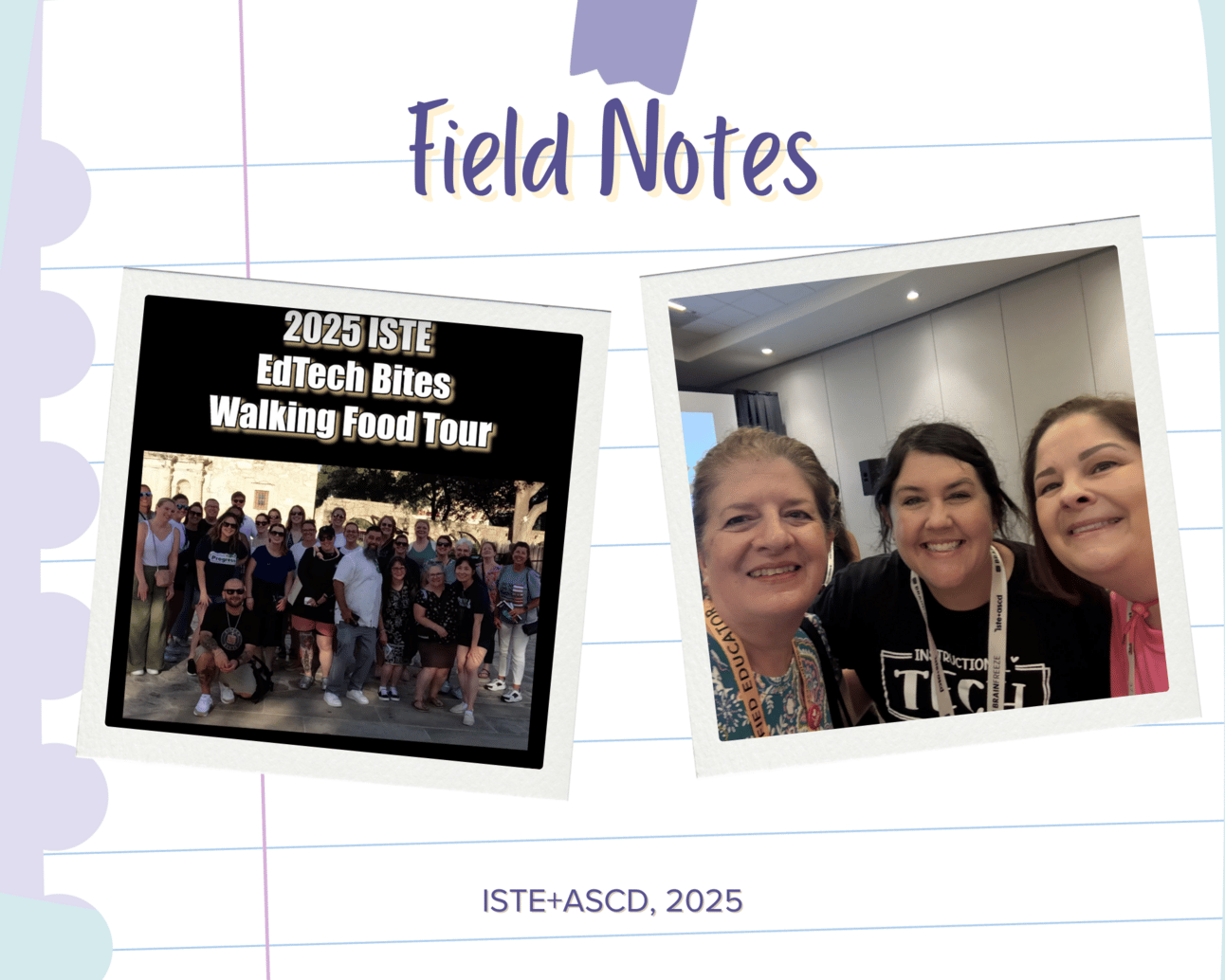- Field Notes: Refined Learning Design
- Posts
- Design for Connection
Design for Connection
Small moves that invite big conversations
Hi there,
Welcome to the very first issue of Field Notes from Refined Learning Design. I’m so glad you’re here. Whether we’ve crossed paths at a session, in an online community, or you’re just discovering this space, thank you for reading.
Each month, I’ll share one idea I’ve been thinking about—something that’s sparked reflection or shaped how I design professional learning. You’ll also find at least one resource recommendation, a quote I can’t stop thinking about, and a peek into what’s happening in my community of PL designers.
This month’s field note starts with moments that made me feel like I belonged.
📓 Field Note: Designing for Belonging
📍 ISTE+ASCD Annual Conference, San Antonio, TX, June 29 - 30
💡 Belonging starts with permission to say hello

photos from the food tour and CoffeeEDU
One Sentence Changed How I Showed Up
At a recent ISTE+ASCD conference social, one sentence changed everything:
“Meet three new people.”
As a solo attendee, that invitation gave me permission to step forward—to join a conversation, pull up a chair, and chat with the person next to me on the walk.
(✨ Shoutout to Gabriel Carrillo and this invitation on his EdTech Bites Walking Food Tour!)
The next morning at CoffeeEDU (which, by the way, is one of my all-time favorite forms of professional learning) Alice Keeler, creator of CoffeeEDU, gave us a few simple but powerful directions:
Mingle. Don’t sit down yet. Talk to someone you don’t know.
She even added conversation starter cards to every table.
I arrived with friends, but I quickly moved to another table. And once again, I made new connections because the design invited it.
These small facilitator moves made a huge difference, especially as an introvert showing up alone. They were clear, kind nudges toward connection. And they reminded me how easy it is to assume connection will happen… and how rare it is to actually design for it.
📚 Wisdom from Gathering Experts
In The Art of Gathering, Priya Parker urges us to lead with generous authority, using structure and clarity to create inclusive, intentional experiences. She urges us to not be a chill host and that our “power” as a host helps us “achieve outcomes that are generous, that are for others.”
In Design for Belonging, Susie Wise asks:
“What are the mechanisms for authentic participation in your group or place? How does participation happen, and what makes it feel good?”
💡 Facilitation Move: Start with Names
Here’s one small but powerful strategy I return to again and again when I facilitate:
On any “Let’s Connect” slide, the first bullet point always invites participants to share their name, role, and location (as necessary).
I repeat this prompt as needed and model it myself.
After extended conversations, I ask participants to thank their partner by name (a move I learned from Jessica Wise at the 2023 Learning Forward Conference).
When I’m a participant and no name-sharing is prompted, I introduce myself anyway. It feels essential.
This summer, I’ve been in a lot of learning sessions with turn-and-talk instructions. But those that included name sharing? Much rarer.
And yet—that’s where the connection starts. ✨
Try This in Your Next Session
The next time you lead a professional learning experience, try one small tweak:
Invite people to share their names.
That simple invitation can ease the way for everyone—especially introverts, newcomers, or those arriving alone. It’s a low-risk move that can open the door to deeper conversation.
I’d Love to Hear
What’s one small move you use (or plan to use) to help people feel more connected in your sessions?
Reply and let me know. Or share it in your own space and tag me so we can learn from each other.
Noting, reflecting, connecting,
💛 Kathryn
PS: If you’re looking for more ideas about connecting, especially for conferences, you might enjoy this post I wrote for Learning Forward Texas: The ABCs of Intentional Engagement.
☕️ And if you’re interested in connecting with our DFW CoffeeEDU community, find details on our website.
Having a sense of belonging leads to flourishing in every environment and group, big and small, from your home to the culture at large.
Highlights from the Community
Here’s what’s happening this month:
We’re wrapping up our book experiment over Tiny Experiments.
We shared our summer learning during our first Sip-and-Share (an iteration of CoffeeEDU.)
Lydia shared an incredible way to use NotebookLM. 🤯
I launched my first minicourse, Begin with Intention (based on a chapter from The Art of Gathering).
The Refined Design Learning Community is a space for curious, collaborative educators who design learning experiences for other adults. Our members are professional learning providers, educational coaches, PLC leads, admin, and aspiring PD leaders.
I use the Circle platform to host the community, and it’s free to join and participate. In our spaces, you’ll find thoughtful discussions, book clubs, and virtual meetups, which are open to all in the community. While I plan to offer paid courses in the future, nearly everything available now (except one minicourse) is completely free.
Reflecting • Connecting • Refining
📓 Why Field Notes?
This newsletter is inspired by the idea of self-anthropology from Tiny Experiments by Anne-Laure Le Cunff. Just like field notes help researchers make sense of what they observe, these monthly reflections help me capture ideas, tools, and questions from my own work designing professional learning. I share them here in the spirit of experimentation, connection, and ongoing refinement.
🤖 AI helped polish this post, but the ideas, intention, curation, and care are all mine.
Reply